Where Can I Find the Windows 10 Backup Files
Many users understand the importance of backing up data, but often only back up the data they want to, without considering what happens next. As a result, when users need to restore a backup or manually delete backup files to free up disk space, they may struggle to find these files. This is because the location of backup files on Windows 10 is not always clear, and users may not know where to look.
Answer - Where Are the Windows Backup Files Stored?
To answer this question, you just need to know how to make a backup on a Windows computer, which would then reveal where the backup files are stored or how to check their path.
The storage path of a backup file is typically not specified and is usually left up to the user. Most backup software, including Windows' built-in backup tool, allows users to choose the path where the backup files are stored. If no custom path is chosen, the system will automatically assign a default path.
To find your backup files, recall when you created the backup and where you saved it, whether on an external hard drive or a local disk. Check the backup location to locate your files.
If you can't remember where to store backup files, try the following two tips. You can choose to store them in a cloud storage service, such as Google Drive, Dropbox, or OneDrive, which allows you to access them from anywhere and ensures they are safe from physical damage.
Tip 1: Apply to Users Back up with Windows File History
When using File History to back up files, Windows automatically creates a folder called "FileHistory". If you've misplaced the backup files, you can search for "FileHistory" in File Explorer to locate them.
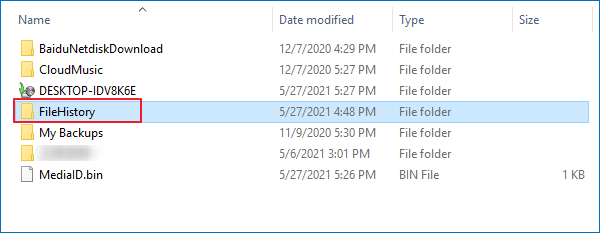
Tip 2: Apply to Users Back up with Third-Party Software
When using third-party software to make a backup, the default name of the backup folder is often "My Backups" or "Backup". You can search for these names in File Explorer to find the backup folder.
Step 1. Right-click the Windows icon, choose Settings > Update & Security > Backup.
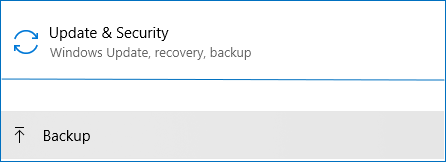
Step 2. Under Back up using Windows File History. Click More Options to open Windows 10 Backup Options.
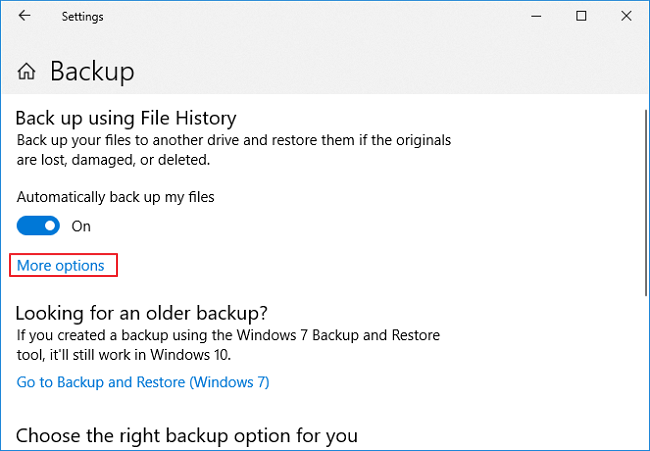
Step 3. Set up backup options to customize the backup time interval, backup duration, and select which folders to back up, with the option to back up to a different drive.
Step 4. Once you have set up, File History will start to back up the folders you choose.
Back up Files with Third-Party Software
While both Windows PCs and Mac computers have built-in data backup and restore features, it's generally recommended to use a third-party backup solution to protect your computer data.
Compared with the built-In comparison to built-in tools, third-party software often offers more power and functionality. For instance, it can back up both files and folders, whereas Windows File History only allows folder backups. Additionally, it can also back up emails and provide options for differential or incremental backups. Some excellent backup software options are available, with Qiling Backup being a notable recommendation.
Your Effective Backup Software - Qiling Backup
- Back up and restore files and folders for personal use
- Back up disk/partition at a block-level
- Back up Windows system along with user settings
- Supports creating a smart backup with only a few clicks
You can download Qiling Backup from the button above and follow our guide to learn how to use it to back up your files.
Step 1. Open Qiling Disk Master and select "File backup" in the "Backup and recovery" page.
Having a large amount of vital data, such as documents, pictures, music, and videos, requires regular backups to protect against unexpected data loss, making file backup a good habit to have.
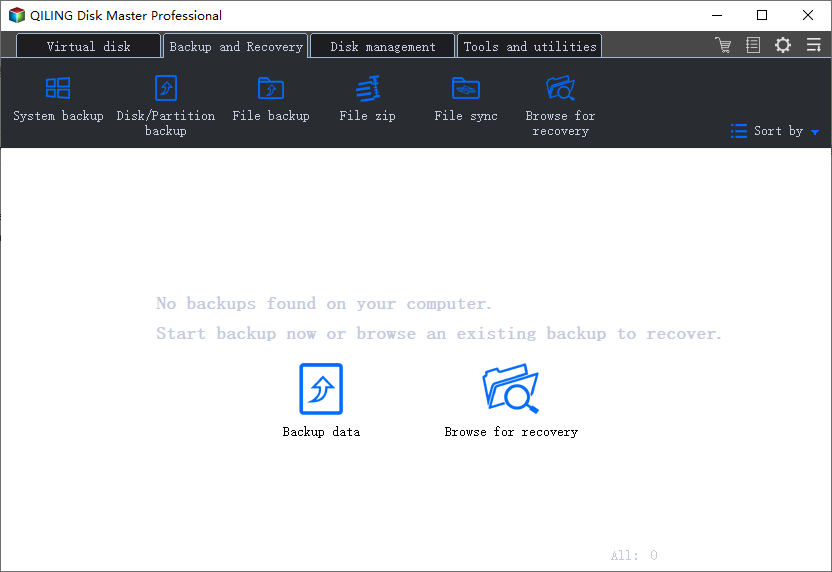
Step 2. Select the files that you want to back up.
You can also enter "Plan name" and "Description" for specifying your file backup in one paragraph shortly.
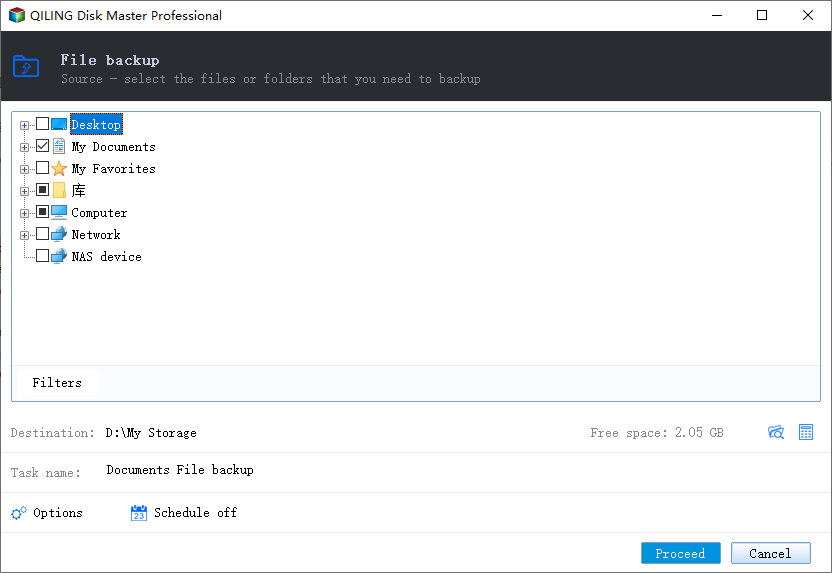
Step 3. Select a destination to save your backup of the selected files.
To minimize the risk of the backup file getting corrupted or destroyed, it's recommended to create the backup file in a different storage media or drive.
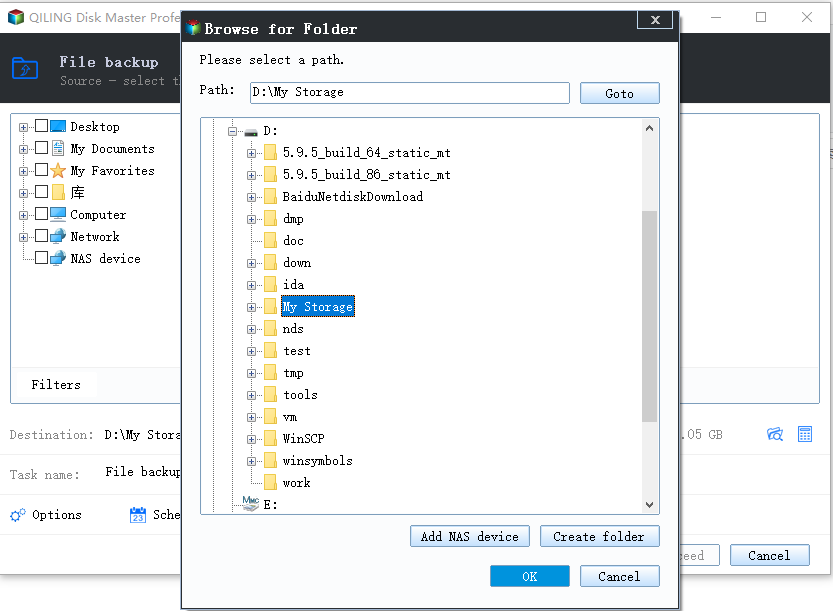
Advanced backup settings allow you to customize and automate your backup process, providing flexibility and convenience in creating a backup plan.
The schedule is to create an automatic backup plan.
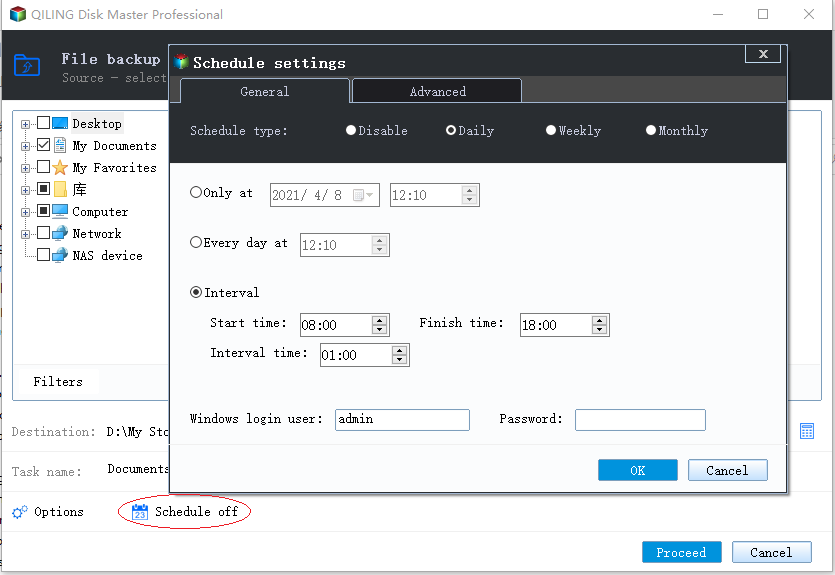
The Image-A reserve strategy is employed to reserve limited images according to the image retention rule.
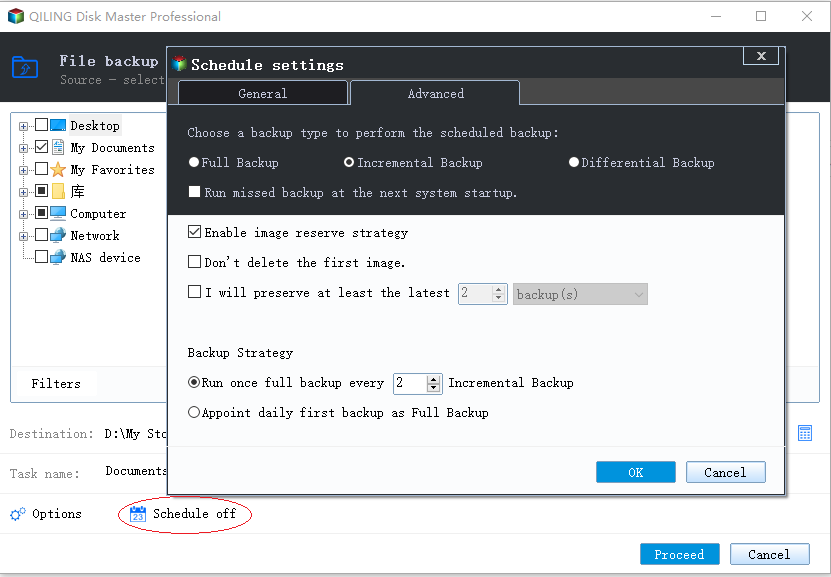
Backup options are to edit the advanced parameters.
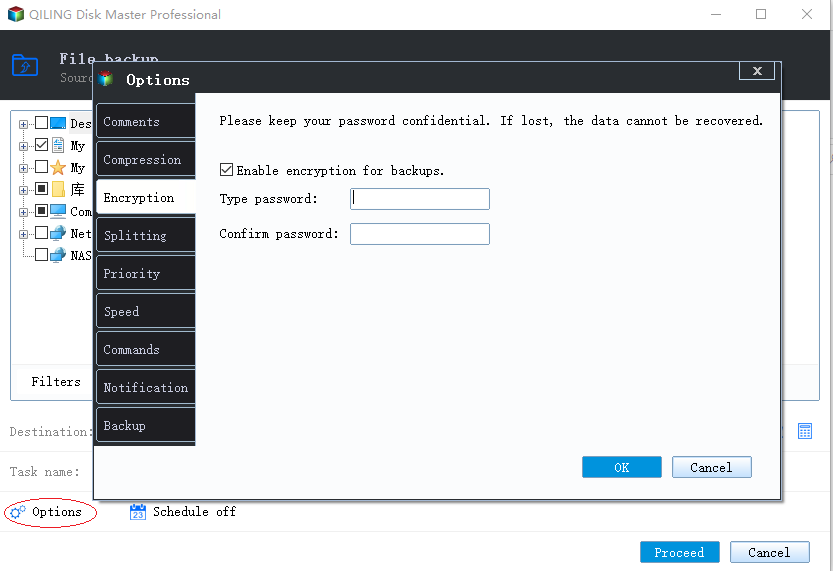
Step 4. Click "Proceed" to execute your operation.
Sum Up
The storage location of the backup file depends on where you choose to save the backup when you create the backup, and trying two specific tips can help search for your backup files.
Related Articles
- How Does Windows Backup Work? Explanation to All 3 Windows Backup Tools
- How Do I Create and Use Windows Restore Point in Windows 10/8/7 [Beginners' Guide]
- How to Install Software on Multiple Computers at the Same Time
- How to Clone Windows 10 to USB Drive on Your Own
- Deploy Windows 10 with Best Windows 10 Deployment Tool